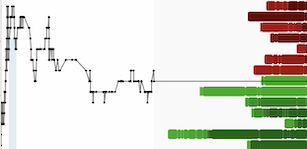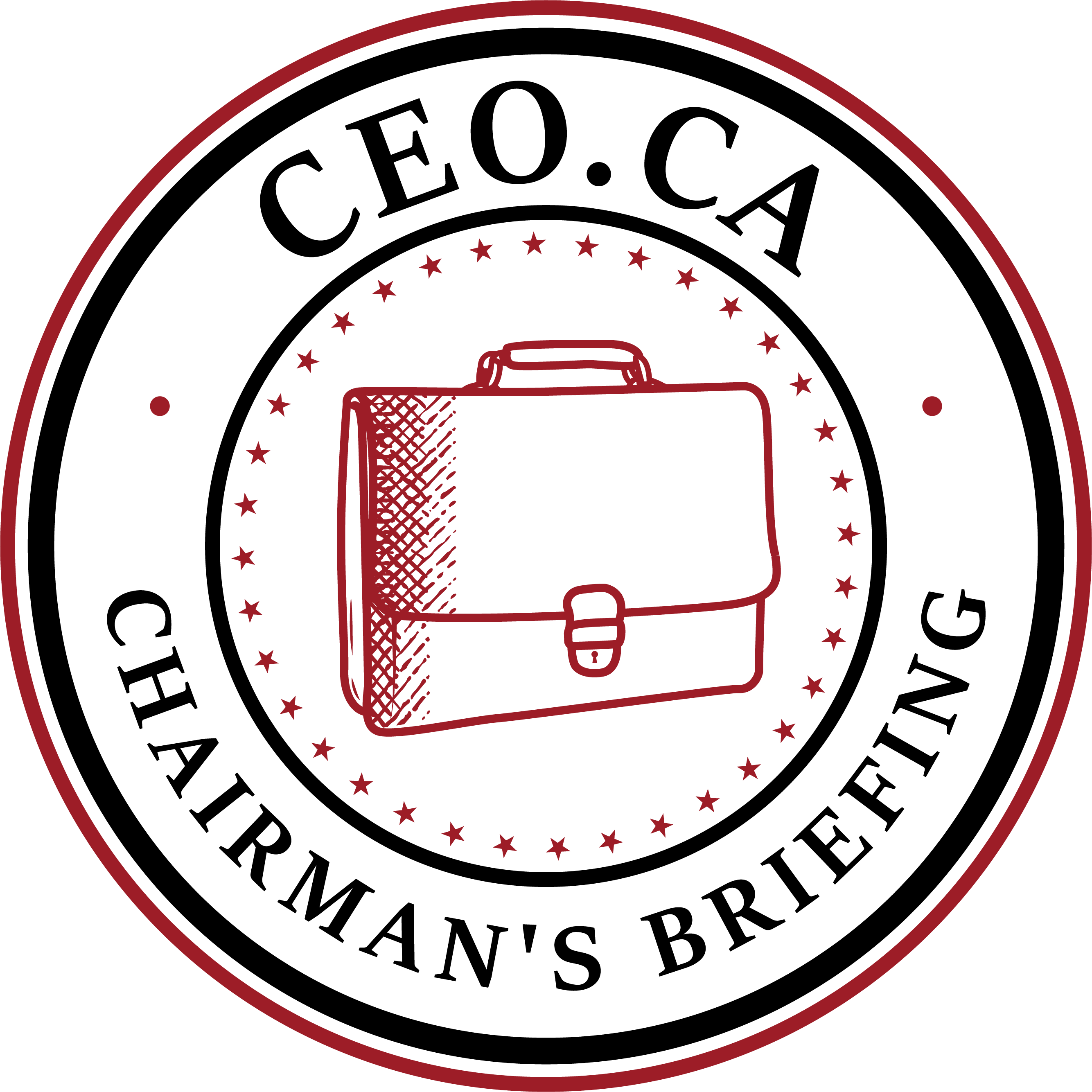--
Peter Bell: Hello, I'm Peter Bell and I'm CEO of Kermode Resources. Up here at Mount Sicker with Justin Deveault of 911 Mining checking out our new permit area -- our first permit ever for this project! Mechanical trenching. Justin, thanks for the opportunity to talk to you about why we did that kind of work program and where we are gonna do it. Let's go for a walk!
Peter Bell: How many times have you driven up and down this road, Justin?
Justin Deveault: Hundreds.
Peter Bell: Yeah. Back in 2022, the first time you brought me up this mountain, we stopped somewhere nearby, but this road hadn't been built so we didn't get the benefit of seeing all this.
Justin Deveault: The Tom's Shaft is right there. The white tape. That's going to be filled in when we do the trenching work.
Peter Bell: It would be interesting to get in there get that third dimension view. The way this project is set up with the historical work, it's amazing how many different dimensions we see here and there of surface exposure. These old bulldozer trenches that run for a couple hundred meters and this road that runs a couple hundred meters provide a lot of exposure over the first two dimensions at surface, but what's happening underground?
Justin Deveault: We plan to put trenches in up all along here following the road as well as trenching along this ditch here.
Peter Bell: Any highlights of grade that we got down here?
Justin Deveault: Grab samples all along here were were really good. We got a nice exposure here with the contact of two rock types -- two kinds of schist. You can see here the sulfide exposure. You have quite a bit more calchopyrite in your chloritic stringer zone, as you can see over here.
Peter Bell: One of our drill holes?
Justin Deveault: Yeah. Backpack drill hole.
Peter Bell: Got to love that piece of equipment! The potential to use that in and around the trenching program is great.
Justin Deveault: I think every area that we trench or create exposure, we should test it and pop a hole.
Peter Bell: By hook or by crook! Every way you can. We've been digging by hand and drilling by hand because we don't need permits for that, but this will be the first time with mechanized equipment to get in here and it will change things. Bulldozer, backhoe -- what do you think?
Justin Deveault: Probably something like a KEBODA 80. A small excavator.
Peter Bell: What do they used to make these roads?
Justin Deveault: Excavator.
Justin Deveault: This is getting to the heart of it. You can see the sulfides all over the road. This entire area here you see sulfides all the way from that culvert down there. There's a good amount of sulfides in all the material in the road. You're cutting through massive sulfide veins in some of the areas here.
Peter Bell: And we've got some results. We got the XRF stuff that we published in November. I think there was 61 samples that I put together from that on a data compilation exercise recently and 35 of those samples are from the crest down to the bend where we have rich outcrop the whole way along. The 35 samples over 200 meters were all above 2% copper and the average for them all was above 8% copper. I first caught that just recently. I was studying the data and I wanted to see a top-cut: all our 60 samples, what are the best ones? I was surprised! I knew the grades were up because of the selective sampling, but I was surprised how they're all in this cluster around the spot where you dug the bulk sample fifteen tonnes. Looking at the results like that made me think you do some really good sampling, Justin!
Justin Deveault: Thanks. This is all loose sulphides where the road cuts across the strike of the the 911 Showing.
Peter Bell: Honey pot! This is where I was using the little handheld hammer right over here. This is fun.
Justin Deveault: This is where we did our hand-dug trench. This material here is all our waste on either side.
Peter Bell: This spot! Some of the high-grade numbers that came out of here were a little shocking.
Justin Deveault: This is the quartz here. Good view down there of some of the quartz.
Peter Bell: And then the bulldozer trench is right above us, too? That's important to me. We've got a couple dimensions already. When you talk to these mining geologists, they're trying to model things out and they want us to give them the drill hole -- give them the third dimension. Well, yeah -- eventually. But look at this 200m of surface exposure that was created what 40 or 50 years ago?
Justin Deveault: We have a sample up there, as well. I think it was one of those we we sent out to ALS for assays to check the XRF.
Peter Bell: Good. And if you want to three dimensions, we're starting on the first two. We've got exposure the down the road. We've got it up the bulldozer trench. And there's another trench pointing off in the other direction. There's a nice collection of data in terms of setting up a geological thesis for the exploration experts out there who want to get all the data and plot things up themselves. We've got a lot of the building blocks ready to go already. But we sure could use more mapping! That's one thing I'd like to do -- bring in some mapping experts to transfer the knowledge you have, Justin, into some geological mapping work. But it's my responsibility to put that story out to the public and do it in a way that's appropriate right for a public company.
Justin Deveault: You can see the strike of the mineralization here. About 100 meters up the road, everything starts to head down this way following the the grade of the old road. There's an exploration adit down there. It's about 18 m long. There is a showing and there are two bulldozer trenches down there, too. And we got got 15% copper on an XRF from a sample I found in the bulldozer trench down there.
Justin Deveault: Now we're off the road a bit and you can see that's the main showing up there. We're on the old historic road that they used here. This tape marks the boundary for North Cowichan. Again, we see sulfides and you can see the rusty ARD just happening au natural.
Justin Deveault: Underneath all this newly forested area here, is the chert block where we have assays. There's chert, quartz, and schist, and we have a few percent copper in all the samples that we took out of here. Down here is an old historic trench right here. We sampled some bedrock in there and got over 15% copper in an XRF. Down here there's a old mine adit. This is one of the pieces we pulled off here. At least for now, this is the boundary that's flagged off and where we're going to stop our trenches. It is just on the edge of the area where the sulfides are located. The strike continues along the direction of the road here forabout 800 meters each way.
Peter Bell: One of the big things with trenching is exposure and potential for acid rock drainage. It's already happening without anybody being here to do anything. There's a whole bunch of stuff to talk about about when you get a public company involved -- what are they going to do and how are they going to leave it? I want to see it better than it was before we got here, but what does that mean exactly? There's a bunch of baseline data that we don't have that I'd really like to get in terms of environmental monitoring.
Justin Deveault: I'm going to start pH testing.
Peter Bell: Good! Thanks Justin. And why start with trenching here? I asked them before and I will say it again. Why trenching here? I know why for me, but some people may disagree. I say to the mining engineers I know that we want to move as much rock as we can and do metallurgical testing as soon as we can. They say, "Good idea." There's a whole new playbook I think to be written for mine exploration development in the 2020s in BC and beyond. I think you've been writing that book, Justin. Kermode's been here trying to underwrite you and I say we should do more of it.
Peter Bell: Justin has been able to dig and stockpile 10-15 tonnes of samples by hand from this spot here. There is such a huge synergy potential between logging and mining in BC. It's this road build that led us to find this copper material and there's a lot of potential for more findings like this. People talk about logging having a hard time and people talk about mining having a hard time -- let's go, BC! We're better together. Imagine if something as boring as routine monitoring of logging roads started leading to mining discoveries. The fact that we've been seeing this kind of intense mineralization over significant distance is a great start, but the fact that this area is supposed to be cleared and logged is like a setup for us to get in there and dig. We can always drill, too.
Justin Deveault: Maybe we can drill a resource with the backpack drill.
Peter Bell: I'd love to see that. I think that's great. But it's the QA/QC costs on resource drilling that that's been the bottleneck for us so far. You need to get a QP up here at at the drill bit watching and logging core as it comes out and that's been the thing that's been too expensive so far.
Justin Deveault: One of the things I'd like to do too is actually clean out this ditch. You can see there's a lot of slough-in material All the banks have fallen off as there's a lot of fractures in this rock. It'd be nice to clean this out. And we found some of our best samples all along this ditch in the bedrock, so it'll be nice to see what we can find in this 300 m stretch of road.
Justin Deveault: Theoretically, ore sorting would remove a lot of the sulfides so you could potentially make this non-PAG and non-ARD.
Peter Bell: I'm concerned about ARD and all this stuff with mining, but keep in mind that logging guys did when they came through here. They built their logging road using what we consider to be high-grade copper mineralized material. They're leaving sulphide-rich rocks on the road and building a road with it, so I don't know if they're getting monitored for release of heavy metals in the same way a mining operation does.
Justin Deveault: There's a potential too to actually clean up a lot of this material in the road. Down there, it's 10 m deep! Same with over here, going all the way up. There's tons and tons of road material that could be used in the ore sorting process.
Peter Bell: Maybe a mini ore sorter along with the logging road build as a scout program? Not likely anytime soon, but this is what I mean when I talk about integrating these industries and finding new ways. Team Canada or whatever. Elbows up? I don't even know what that means.
Peter Bell: I appreciate you guys. I'm glad we've had a chance to be able to push this project forward a little bit. It deserves to go a lot further in my opinion. It's a crazy world out there right now with lots of weird stuff going on. I think projects that are close to home matter more than ever and working with the people who live there is the only way to do it, please and thank you! What else? Keep it super simple. That's what we're trying to do. Start with the trenching -- I don't want to drill a deep hole and miss. I want to go dig some more of this high-grade copper that we're finding and send it to someone. Keep it super simple. Hope to see you again!
--


Source from BC Government website: https://maps.gov.bc.ca/ess/hm/imap4m/
Permit Status Description: Open
Permit Issue Date: Apr 11, 2025 7:00 AM
Mine Name: 911 Mine
Mine Number: 2000482
Mine Latitude: 48.87106
Mine Longitude: -123.75478
--
Filmed April 8, 2025. Qualified Person: Jacques Houle, P.Eng., a qualified person as defined by NI 43 – 101, is responsible for the technical information contained in this video and accompanying text for the Mount Sicker exploration property. Readers are cautioned that the information in this video and text is not necessarily indicative of the continuity and grades of mineralization on the property of interest. Note that Kermode may not complete the proposed exploration work as described in this video in part or at all.



